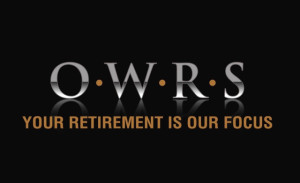Wait, Mom did what with her money?”
Questions like this are uttered amongst siblings many times over, and will continue to be asked with the aging demographics of our society. The problem is, too often, adult children find out about ill-advised financial decisions made by an elderly parent when it’s too late to do anything.
I work with clients every day who tell me, I just wish Mom would have asked me before she… (fill in the blank). So let’s take a look at common financial pitfalls of elderly Virginians and how to avoid them.
You can help your senior friends and relatives avoid these five financial mistakes:
1. Scams
Senior citizens are constantly targeted by scam artists and slick salespeople. A good scam artist is hard to stop, but open communication goes a long way in confronting this danger.
2. Being taken advantage of by junior relatives
It’s sad for us to think about, but I’ve seen my fair share of cases where Mom or Dad were taken advantage of by younger members of the family with ulterior motives. Make sure everyone in the family is on the same page when it comes to Mom or Dad’s well-being.
3. Putting the house into the children’s names
A typical response I hear after asking adult children why a parent’s house is in their name is, “So the nursing home wouldn’t get it.” While there is some accuracy to that statement, it doesn’t lay out the full picture or all the financial implications of such a move. The main area of concern with this is taxes. When a house is inherited by children, it gets what is known as a step-up in cost basis. This means that when children go to sell the house after Mom and Dad have passed away, they will only owe long-term capital gains taxes on the difference between the sale price and the value of the house at the time of passing. So if the house is sold shortly after a parent’s passing, the children can usually walk away with all the proceeds from the sale without owing any taxes. However, this isn’t true if the house is put into the children’s names while Mom or Dad is still living. In that case, the cost basis of the property is the price that Mom and Dad paid for it originally, plus any documented improvements to the house, along with no step-up in cost basis at the time of Mom or Dad’s death. This could result in a large and unexpected tax bill for the children. If Mom and Dad want to preserve the house in case they need nursing care, they should consult an elder law attorney experienced in Medicaid planning. In many cases the attorney can draft a specially designed trust to hold the house and protect it if Medicaid is needed for long-term care, while still preserving the step-up in cost basis when the house is sold. Of course, you still have the 5-year Medicaid look-back period with which to contend.
4. Putting the children’s names on bank accounts
This is usually done so the children can pay bills and write checks if Mom or Dad can no longer do it themselves. What they don’t realize, is that by doing that, parents are inviting their children’s personal legal liabilities into their own financial lives. Once someone’s name is on an account, they become a legal owner of that account. Therefore, if lawsuits, creditor problems, or divorce come up for the child whose name is on the account, Mom and Dad’s money is at risk. A better way to handle the titling for bank and investment accounts is to use a POA/POD tandem designation. The POA (power of attorney) will allow the child to pay bills and write checks if needed, and the POD (payable on death) will allow the money in the account to pass directly to the child and bypass probate. This way, the child is not a legal owner of the account and can’t subject Mom and Dad’s money to his or her own personal liability.
5. Not having a plan to pay for long-term care
Seventy percent of people over age sixty-five will need some form of long-term care; ignoring this stat won’t change it. In the Richmond area, the average monthly cost of an assisted living facility is $3,500 to $5,000. For nursing home care, that figure could easily double. Most people know the cost of long-term care is high, but what most people don’t understand is how to effectively pay for that care. If you already have a long-term care insurance policy, that’s great, it can go a long way toward easing financial burden. If you don’t, you need to look at what assets are available to pay for the care, and separate those assets into buckets. The first, and best, bucket of assets to use is any IRA/401(k) monies. In most cases, the high medical costs associated with long-term care will offset the taxation of money withdrawn from the IRA/401(k). Think about that for a moment. The individual received a tax deduction for the contributions to the IRA/401(k), the money grew tax-deferred, and now, because of the high medical deductions, the money could be withdrawn without generating an additional tax. The second bucket of assets to use is any other tax-deferred types of accounts, usually annuities. The last bucket to be accessed is money in savings, or proceeds from a house sale.





